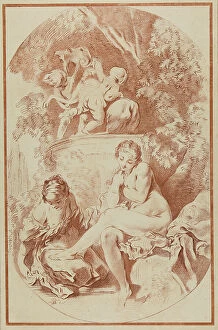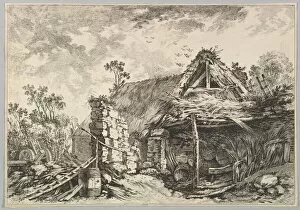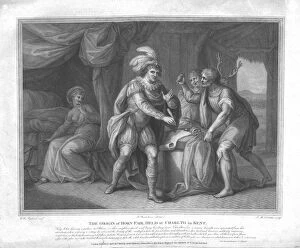William Wynne Ryland Collection
William Wynne Ryland was an English engraver who lived from 1732 to 1783
All Professionally Made to Order for Quick Shipping
William Wynne Ryland was an English engraver who lived from 1732 to 1783. He was known for his exquisite artistic skills and his ability to capture the beauty of various subjects in his engravings. One of his notable works is "IIe. Vue de Fronville (2nd View of Fronville), 18th century, " which showcases a picturesque landscape with intricate details that transport viewers into another world. In "The Graces au Bain (The Graces at the Bath), 1756, " Ryland depicts three graceful women enjoying a moment of relaxation, their elegant poses and flowing drapery adding a touch of ethereal beauty to the scene. Another artwork by Ryland, titled "Rest in the Country, " captures the tranquility and serenity of rural life, inviting viewers to escape from the hustle and bustle of city living. Ryland's talent shines through in "Peasant Crossing Water, 1786, " where he portrays a humble peasant woman carrying a bucket with such realism that one can almost feel her determination and strength. In another piece called "Ophelia: 'There's fennel for you, and columbines' (Shakespeare, Hamlet, Act 4), " Ryland pays homage to Shakespeare's iconic character Ophelia with delicate strokes that convey both fragility and melancholy. "The Origin of Horn Fair" takes us back in time as it depicts an annual fair held at Charlton in Kent during the early nineteenth century. This captivating artwork showcases Ryland's attention to detail as he captures lively scenes filled with people engaged in various activities. Ryland also ventured into mythological themes like in "The Triumph of Venus. " Here he portrays Venus, the goddess of love and beauty, surrounded by cherubs amidst an enchanting setting that exudes elegance and grace.
















